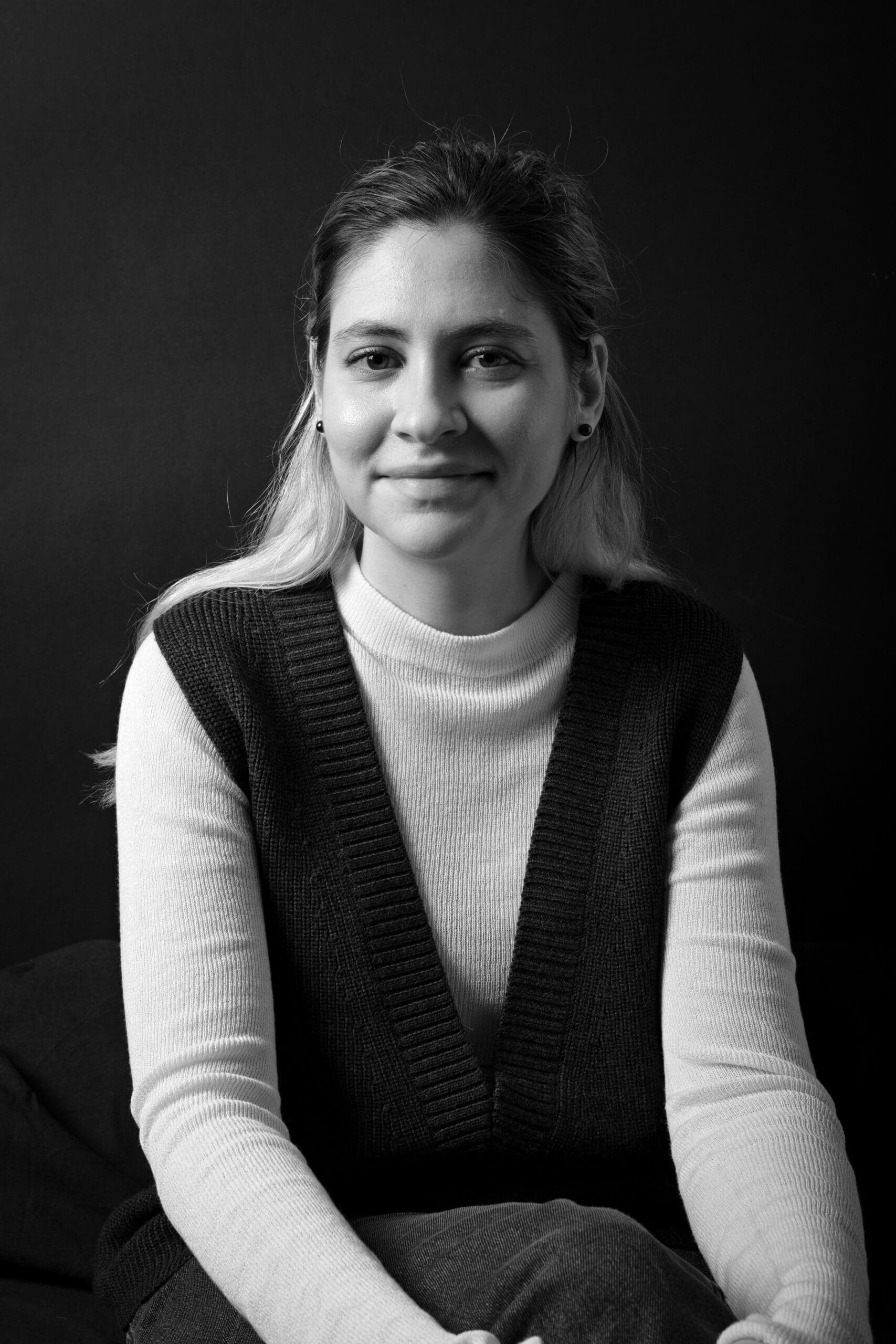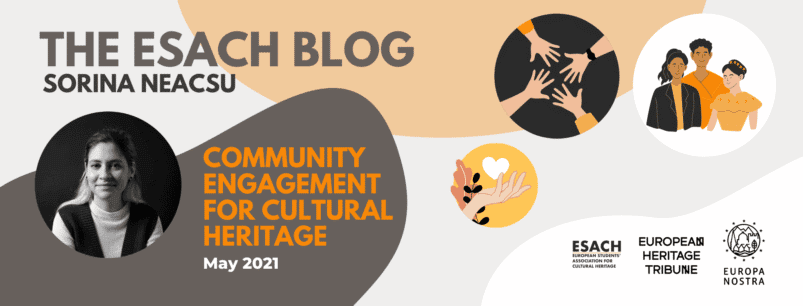Unconsciously, community is like a second home. It is how people live and develop personally and professionally and, considering this symbiosis, heritage promotion and protection is dependent on its community. While there are many ways to connect the community to its heritage, one of them is through volunteering: a practice that is best conducted through enthusiastic leadership and engaging storytelling. In exchange, heritage is protected, awareness is raised, and the community grows stronger. Below, you can read about a case study based on personal experience.
Written by: Sorina Neacsu.
How it all started
In 2019, I joined for the first time a European Heritage Volunteers Partner Project in Finland. For two weeks all the participants focused on shingle-roof replacement, sections of traditional spruce-wood fences revivals and façade painting at a Kauppila Farm Museum. The “Traditional Wooden Techniques at a Farm Museum” project was organised by the Regional Museum of Finland Proper (the name Finland was in medieval times applied only to the Southwest part of Finland) and the City of Laitila, in partnership with European Heritage Volunteers. Twelve volunteers participated from around the world.
The whole project and activities were very inspirational. Towards the end of our time in Finland, the local community joined to visit the newly restored sections of the farm and to meet the participants. They seemed impressed with the immediately visible improvements after only two weeks’ work. I then remembered that setting an example can originate outside the local community when it comes to heritage. Members of the local community taught us talkoo – a local way of working together, voluntarily, for a set aim – providing further incentives to continue the work on the farm museum.

Figure 1: Participants engaged in building a well, part of the closing ceremony. Source: Author
Organising a project at home
In this context and with high levels of motivation, I returned to my home country, Romania, and decided to organise a project there. Together with “Heritage for the Future” Cultural Association, the NGO I work with, and along with the European Heritage Volunteers, we began planning. Although 2020 did not provide the easiest timeframe to plan and organise similar projects, things seem nevertheless smoother if you keep your motivation. We thus sent letters of intent in order to find the right and enthusiastic partner museum – eventually the Bistrița Năsăud Museum Complex. After identifying the main aim of the project – conservation and restoration of sheepskin coats – we focused on schedules, locally sourcing of goods and services, planning trips and educational activities, while consulting with the local community in Bistrita.


Figure 2 & figure 3: Bistrița Năsăud Museum Complex internal courtyard. Source: Author/Bistrița Năsăud Museum Complex
Sheepskin coats
Sheepskin coats are Romanian traditional winter garments, resulting from a variety of gathered influences and so telling beautiful historic tales. In this light, we thought sheepskin coats were the perfect illustration for the community’s diversity. Folk costumes best build a bridge between the past and the future, allowing intangible and tangible heritage to meet.
Initially, the garments were mainly white, whereas black and brown were employed only later in finishing touches and decorations. Eventually, external influences made silk floral motifs and tassels very appealing and desirable, and some pieces bear the wearer’s initial and year of making.



Figure 4, figure 5 & figure 6: Sheepskin coats exhibited at Bistrița Năsăud Museum Complex, evolution from black and white to colour. Source: Author/Bistrița Năsăud Museum Complex
During the 2020 project, 8 volunteers from 7 different countries participated. The group managed to work on over 20 pieces during the project. For a successful outcome, it is highly important to liaise with the community as much as possible, as participants also stated (a recap video is available at this link). The enthusiasm of both Romanian partners was key in organising the project, and the already built European Heritage Volunteers community was a helpful hand in this. There were quite a few leadership related stances that helped us along the way. These include:
- sharing stories to strengthen the sense of belonging;
- facilitating the work among partners and listening to their specific needs;
- considering the community as part of your circle of friends.
While adapting to fit a particular given situation, you serve as a catalyst for change, inherently motivating, inspiring and promoting the participation among diverse groups.


Figure 7 & figure 8: Participants showcasing their work on the last day of the project at Bistrița Năsăud Museum Complex. Source: Author/Neacsu
The initial objectives we had set for the project were surpassed. Both the involved community and participants contributed to the rescue, conservation and restoration of the chosen traditional sheepskin garments. Participants were offered the opportunity to widen their heritage-linked knowledge and skills, and enhanced a deeper understanding of the Romanian folk costume, as well as its intangible and tangible heritage contributions. The group itself became a community with friendship and professional links that can possibly expand to other community-led projects.
Outcome and plans for 2021
As a result, in fact, in 2021 “Heritage for the Future” Cultural Association and ASTRA National Museum Complex joined forces to organise another European Heritage Volunteers summer project, in keeping with the 2020 sheepskin coats, leather and textiles theme. ASTRA Museum is the largest open-air museum in Romania (as well as the most important ethnographic institution in Romania) and the second largest in Europe.


Figure 7 & figure 8: Views ASTRA National Museum Complex. Source: Author/ASTRA National Museum Complex
The site of the museum covers 96 hectares, 42 of which allocated to the exhibition itself. Here, tangible and intangible heritage mix in a valuable way, enabling visitors to ‘taste’ traditional treasures of Romanian heritage. The museum organises a series of events to promote the Folk Traditions in Romania, aiming to keep the community always engaged. In this light, incorporating within such an institution’s framework any volunteer-led activities promises to consolidate the promotion of the displayed heritage and its significance even further.



Figure 11: Woman spinning thread. Source: Author/ASTRA National Museum Complex | Figure 12: Folkloric summer event. Source: Author/ASTRA National Museum Complex | Figure 13: Traditional weaving craft. Source: Author/ASTRA National Museum Complex
This is my example of community engagement through volunteering for heritage. There are plenty of other means to match the community to its heritage for a mutual and continuous growth and improvement. Lastly, apart from the joy of both immediate and durable results, we are gifted the opportunity to establish a network of like-minded young professionals striving to develop a bright future for cultural heritage.
About the author

Sorina is a cultural manager activating in the cultural heritage and NGOs fields. She acquired skilled in museum education, cultural heritage, project management, youth/volunteer management & engagement and art history. Shown enthusiasm for writing and reporting onheritage related subjects. Keen on exploring the enhancement and dissemination of cultural heritage and dreams to foster a better understanding of heritage relevance in everyday life. She joined ESACH coordination committee in December 2020 for the European Heritage Youth Ambassadors Programme.

